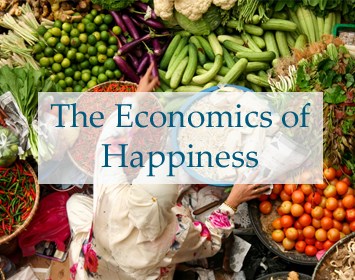Inauguration 2017 Special Coverage w/ Angela Davis, Naomi Klein, Ralph Nader & More
Menu

Special coverage in the Trump Era
From Public Citizen's Corporate Presidency site: "44 Trump administration officials have close ties to the Koch brothers and their network of political groups, particularly Vice President Mike Pence, White House Legislative Affairs Director Marc Short, EPA Administrator Scott Pruitt and White House budget director Mick Mulvaney."
Dark Money author Jane Mayer on The Dangers of President Pence, New Yorker, Oct. 23 issue on-line
Can Time Inc. Survive the Kochs? November 28, 2017 By Jane Mayer
..."This year, among the Kochs’ aims is to spend a projected four hundred million dollars in contributions from themselves and a small group of allied conservative donors they have assembled, to insure Republican victories in the 2018 midterm elections. Ordinarily, political reporters for Time magazine would chronicle this blatant attempt by the Kochs and their allies to buy political influence in the coming election cycle. Will they feel as free to do so now?"...
"Democracy in Chains: The Deep History of the Radical Right’s Stealth Plan for America" see: our site, and George Monbiot's essay on this key book by historian Nancy MacLean.
Full interview with The New Yorker’s Jane Mayer March 29, 2017, Democracy Now! about her article, "The Reclusive Hedge-Fund Tycoon Behind the Trump Presidency: How Robert Mercer Exploited America’s Populist Insurgency."
Democracy Now! Special Broadcast from the Women's March on Washington
The Economics of Happiness -- shorter version
Local Futures offers a free 19-minute abridged version of its award-winning documentary film The Economics of Happiness. It "brings us voices of hope of in a time of crisis." www.localfutures.org.
What's New?
December 07, 2008
The Obama Economic Stimulus -- Will It Take Us Where We Need to Go?
" Dear President-elect Obama,
The economic stimulus package you laid out today in your weekly radio and internet address is a great starting point -- very much needed as the downward spiral of the economy takes away the breath of even the most level-headed observer.
Your plan to save or create 2.5 million jobs by investing in energy efficiency, infrastructure, and schools are all things we called for in the agenda we laid out in the Fall issue of YES!, and are all favored by a large majority of Americans.
Let's look a bit more closely at your specific plans:
"First, we will launch a massive effort to make public buildings more energy-efficient. Our government now pays the highest energy bill in the world. We need to change that. We need to upgrade our federal buildings by replacing old heating systems and installing efficient light bulbs. That won’t just save you, the American taxpayer, billions of dollars each year. It will put people back to work."

This is an excellent place to start. Increasing the efficiency of buildings reduces greenhouse gas pollution, and cuts dependence on both imported energy. It sets a higher standard for building owners to emulate, and jump starts what could be one of the best new sources of stable, family-wage employment -- refurbishing the built environment for energy efficiency. And it is an investment that will quickly begin saving us tax dollars.
"Second, we will create millions of jobs by making the single largest new investment in our national infrastructure since the creation of the federal highway system in the 1950s. We’ll invest your precious tax dollars in new and smarter ways, and we’ll set a simple rule – use it or lose it. If a state doesn’t act quickly to invest in roads and bridges in their communities, they’ll lose the money."
Investment in national infrastructure is desperately needed after years of neglect by leaders hostile to government projects. But we are entering a new era, when everything we build must be assessed for its climate impacts. The potential catastrophe of run-away climate meltdown could make the economic melt down look minor by comparison. Infrastructure investments must be used to build to climate friendly projects -- bridges that accommodate mass transit, bike lanes, and pedestrians, for example. And roads that encourage compact communities rather than expensive and wasteful sprawl...
Read full article here.

